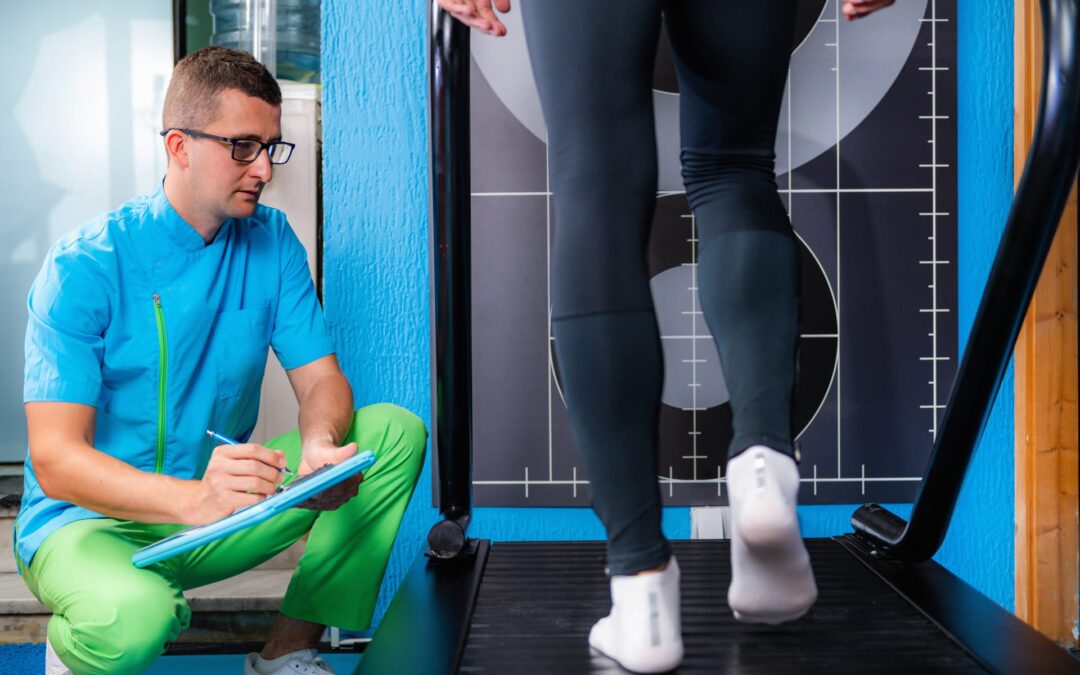Motion analysis has become an indispensable tool in sports training, revolutionizing how coaches develop their athletes’ skills and performance. This article will explore essential techniques and the multifaceted benefits of motion analysis, providing sports medicine coaches with actionable insights. Our journey will cover from the fundamental aspects of motion analysis to leveraging technology and pursuing continuous education opportunities.
The Basics of Motion Analysis
At its core, motion analysis involves the scientific study of human movement. Coaches use this technology to capture detailed data on how athletes move during exercise, helping to pinpoint inefficiencies that may not be visible to the naked eye. This process utilizes various technologies including high-speed cameras and biomechanical sensors to gather data that is crucial for athlete development.
- Understanding Kinematics: Analyzing the geometric data of movement without forces.
- Motion Capture Systems: Tools and technologies used to record comprehensive movement data.
- Data Utilization: Translating raw data into actionable training insights.
Key Motion Analysis Techniques
To effectively enhance athlete performance, coaches employ several cutting-edge techniques in motion analysis. Video analysis, for instance, allows for the playback and slow-motion examination of an athlete’s technique, providing a visual basis for corrective feedback. Force plates measure the forces generated by an athlete’s movements, offering insights into their balance and stability.
- Sequential Motion Analysis: Breaking down movements into phases for detailed examination.
- Muscle Activity Monitoring: Using electromyography (EMG) to assess muscle engagements and patterns.
- Real-time Feedback: Implementing systems that offer immediate performance insights.
Enhancing Athletic Performance
Leveraging motion analysis translates into direct performance improvements on the field or track. Coaches can identify specific biomechanical movements that need adjustment, thereby enhancing technique and efficiency. This proactive approach not only boosts performance but also mitigates the risk of sports injuries, as better alignment and technique lead to safer movements.
- Personalized Training Adjustments: Tailoring workouts to address specific biomechanical needs.
- Injury Prevention Strategies: Identifying risk factors for injuries and modifying training accordingly.
- Long-term Athlete Development: Ensuring improvements are sustainable and beneficial over an athlete’s career.
Motion Analysis Software Tools
Choosing the right motion analysis software is pivotal. Each software package offers unique features suited for different sports and levels of analysis, from local club teams to professional athletes. These tools process the data collected and provide detailed reports, which are essential for making informed training decisions.
- Comparison of Popular Software: Features and benefits of leading motion analysis software.
- Integration with Other Tools: How to combine software with other training technologies for a holistic approach.
- Cost vs. Benefit Analysis: Evaluating the return on investment for different software solutions.
Training Programs and Motion Analysis
The integration of motion analysis into training programs should be strategic and thoughtfully implemented. Starting with key movements essential to a sport and gradually incorporating data insights allows for a seamless blend of traditional and modern training methods. This approach ensures that athletes and coaches alike can adapt comfortably without being overwhelmed by technology.
- Baseline Assessments: Establishing initial data points to measure progress against.
- Ongoing Monitoring: Regular check-ins to adjust training as athletes develop.
- Feedback Loops: Creating systems for continuous improvement based on analytical data.
Consulting Services in Sports Medicine
Consulting services play a vital role in bridging the gap between motion analysis data and practical training applications. These professionals can assist in the initial setup of systems, train coaching staff in the effective use of technology, and provide ongoing support in interpreting complex data sets. This guidance is crucial for maximizing the benefits of motion analysis.
- Expert Guidance on Setup and Implementation: How consultants can streamline the integration process.
- Case Studies of Successful Implementations: Examples of how sports teams have benefited from professional consulting.
- Ongoing Support and Training: The importance of continual professional support in maintaining system effectiveness.
Continuing Education in Motion Analysis
For coaches committed to maintaining a competitive edge, continuous education in motion analysis is crucial. Educational programs from universities and sports technology firms offer courses that teach the latest techniques and tools in the field. These programs are designed to keep professionals at the cutting edge of sports science and technology.
- Certifications that Enhance Expertise: Recognized programs that provide professional credentials.
- Latest Trends and Technologies: Keeping abreast of emerging technologies in motion analysis.
- Impact of Advanced Knowledge on Training: How deeper insights can transform athlete training.
In-depth analysis of the topics discussed highlights that motion analysis is a powerful tool not just for improving athletic performance but also for ensuring athletes’ long-term health and success. Effective integration of this technology into sports training and rehabilitation opens up new vistas for exploration and efficiency in athlete management.
Key Takeaways
- Motion analysis provides invaluable insights into athletes’ biomechanics, optimizing training and reducing injury risks.
- A variety of technological tools are available to support motion analysis in sports.
- Continuous education is vital for coaches to remain at the forefront of motion analysis technology.
- Consulting services can significantly enhance the effective integration of motion analysis into sports programs.
Frequently Asked Questions
What is motion analysis in sports? Motion analysis in sports involves using advanced technologies to analyze athletes’ movements to optimize performance and prevent injuries.
How does motion analysis benefit athletes? It provides precise analysis of movement, allowing for targeted improvements in technique and prevention of movement-related injuries.
What are the best motion analysis software tools? Popular tools include Dartfish, Kinovea, and Vicon, each known for their precise analysis capabilities and user-friendly interfaces.
Can motion analysis be used in all sports? Yes, motion analysis is applicable across all sports, offering benefits in training precision, safety, and performance enhancement.
How can a coach start implementing motion analysis in training? Coaches should begin by selecting appropriate motion analysis tools, getting trained in their use, and gradually integrating the insights into regular training regimes.

